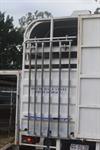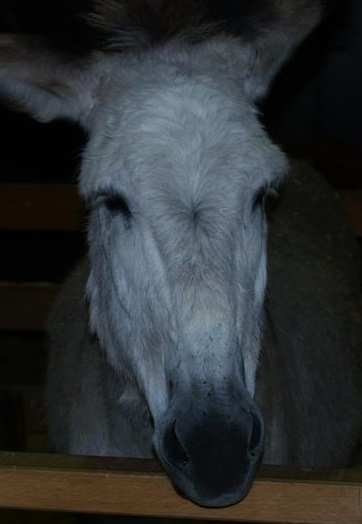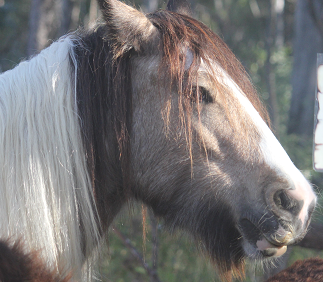
Horse care focusing on stable management
Learn more about equine nutrition, feeds, bedding, exercise, tacking and conditioning with this distance learning course. This course will develop your understanding of how to keep a horse happy and healthy in a stabled environment.
Course Structure and Content
This course has seven lessons:
1. Feeds
- Roughage
- Concentrates
- Roots
- Green feeds and succulents
- Tempters and tonics
- Salts
- Feeding for special purposes
2. Stabling
- Three ways to keep horses
- Combined systems
- Stalls
- Stables or looseboxes
- Barns
- Stable layout
- Feed rooms
- Tack rooms
- The medicine chest
- Stable routine
- Stable tricks and vices
3. Bedding and Mucking Out
- Reasons for bedding
- Bedding qualities
- Bedding types
- Choosing a system
- Tools needed for mucking out
- Mucking out
- Bedding down
- Managing the bed
- Conserving bedding
- Comparing bedding
- The muck heap
4. The Foot and Shoeing
- Foot structure
- Trimming
- Advantages and disadvantages of shoeing
- Signs that shoeing is required
- The farrier's tools
- How the horse is shod
- What to look for in a newly shod hoof
- Basic shoes
- Surgical shoeing
- Studs
5. Exercise and Conditioning
- The difference between exercise and conditioning
- Soft and hard condition
- Exercising a horse
- The fittening schedule
- Principles of fittening
- Maintaining fitness
6. Tack and Tack Fitting
- Principles of bitting
- The mouth
- Types of bits
- Where the bit acts
- Fitting the saddle
- Causes of sore backs
- Care of the back when unsaddling
- Saddle types
- Girths
- Saddle cloths and numnahs
- Tack cleaning
7. Horse Facility Design
- Farm layout
- Housing and shelter
- Costs
- Animal health and comfort
- Safety for people and animals
- Security and legal concerns
Aims
- Analyse the feeding requirements and feeding techniques available for horse husbandry.
- Develop a stable management program for horses.
- Explain the management procedures necessary to fulfil the bedding requirements of horses.
- Explain the management and care of horse's feet.
- Implement management procedures for the conditioning of horses.
- Describe the procedures used for managing the tack requirements of horses.
- Explain the management, including design and applications, of facilities used in the horse industry.
Can horses learn to live in a stable?

The idea that animals learn through cognitive processes has been debated for a long time. The conclusion seems to be that simple or lower order animals are capable of limited learning, while complex animals are capable of far more. Animals do seem to suddenly arrive at a conclusion to a problem, and are sometimes said to display insight.
The question of whether animals display insight is controversial, and not proven. Gestalt psychologists have believed that animals develop insight into problems through a natural tendency to perceive a situation as a whole. This view has been criticised on various grounds. Insight has neither been proven, nor ruled out. More intelligent animals do have an ability to draw on experience gained in other contexts and apply those experiences to a different context.
Problem-solving in animals is difficult to investigate, largely because the human investigator cannot accurately and comprehensively know how the animal sees a situation.
Associative Learning
Animals can learn to associate two events or items if the relationship between them is a casual relationship. There are two basic alternative concepts:
- Animals make associations between different stimuli (i.e. stimuli-stimuli learning), or
- Animals acquire knowledge about various relationships in their environment
If you adopt the second viewpoint, there are different types of knowledge which animals might acquire:
- Procedural Knowledge is knowing how (i.e., knowledge linked to a procedure)
- Explicit Knowledge is knowing explicit facts
- Declarative Knowledge is available only to animals that have the ability to “declare” (i.e., humans using speech)
Every time a horse is handled, they are learning – whether it be good or bad habits. They learn best with consistent repetition and consistent use of aids and respond well to pressure and release.
Obedience
Obedience to a leader is quite natural to horses. Handlers that are able to have their horses regard them as the leader of the herd are at an advantage. To do this the handler must gain the respect and trust of the horse. If the handler puts the horse in any type of confinement or danger trust will be lost and there is unlikely to be a willing working partnership in the future (i.e. if you know your horse dislikes going past the flapping cover on the hay, unless you are trying to teach him to go by it, choose another route). They will trust you much more if you show them where their boundaries are and let them know they can trust you. Your goal should always be to have a willing partner that wants to please.
Reinforcement
The basic principle of training the horse is by a system of reinforcement. This means that the horse is rewarded (positive reinforcement) when it exhibits the behaviour / response we want. Alternatively negative reinforcement can be used. This is where the horse exhibits a behaviour or response in order to avoid something. For example in order to turn left pressure is applied with the left rein and the horse naturally bends its head to the left to relieve the pressure. If the horse is being schooled properly the rider releases the bit pressure when the horse has exhibited the behaviour / response we want.
Punishment
The object of punishment is to stop or reduce a type of behaviour. However, it is important to understand that punishments (as well as rewards) are measured by their effect not by their intention. In some cases handlers can actually be positively reinforcing behaviour when their intention has been to punish it.
For example, a horse that kicks the stable door for attention is shouted at by the yard manager. The horse stops and the yard manager may think that their verbal reprimand has been an effective punishment. However, consider that if the horse is kicking the door for attention, then we would expect him to stop when he has achieved his goal – getting the manager’s attention, even if it means getting shouted at. The key to establishing whether the horse is viewing it as a punishment is to assess the long term changes in behaviour. Does the horse decrease the amount he kicks the door when the yard manager is about, or does kicking increase?
It is also important to note that incorrect use punishment can cause the horse to become increasingly aggressive and that punishing a scared horse may lead to increased timidity and fear of the trainer.
Reinforcement Schedules
When we want to teach a horse a new behaviour, we should aim to reinforce every occurrence of the behaviour initially – this is called continuous reinforcement. Once the behaviour or response has been learned the horse should then only be rewarded intermittently. The benefits of intermittent reinforcement are:
- More persistent results as behaviours learned through intermittent reinforcement tend to be remembered better.
- More focused training as intermittent reinforcement can be used to only reward excellent examples of the behaviour or response required and performance improves rapidly.
- Allows a duration schedule to be implemented. This means that the horse is required to perform the behaviour for a certain period of time before he is rewarded.
When we want to help the horse change his behaviour we can use a number of techniques:
Flooding
This is used for horses that are over sensitive for some reason. For example a horse who is scared of the noise of the clippers. The basic principle of flooding is to expose the horse to the stimulus it is afraid of in a safe environment until it learns that there is nothing to fear. In the case of the clippers, this could mean stabling the horse next to one being clipped or running the clippers in the stable until the horse relaxes to the sound.
Systematic desensitisation
This is a system used to deal with similar problems of over sensitisation or fear. It involves training the horse to be relaxed in the presence of the fearful object or stimulus. It is a long process and involves the gradual introduction of the fear provoking object or stimulus. This can be used for horses that are difficult to load. The lorry or trailer can be left in the field for the horse to become accustomed to it. Later hay can be left inside for the horse to investigate or he be fed his tea on the ramp and progressively put the feed bucket further and further into the lorry / trailer. Eventually the horse will load and can be left for a few minutes with a hay net or feed to keep him occupied. This can be increased gradually until the horse is ready to be taken on a short journey and returned to its paddock.
Exhaustion
This technique is similar to flooding. It is applied with the aim of getting the horse to stop the problem behaviour as quickly as possible. For example, a horse with a rank order issue that manifests in kicking at people should be encouraged to repetitively (but safely) continue kicking until it becomes exhausted enough to give up by itself. The horse eventually learns that the activity of kicking will only result in total exhaustion.
Punishment
Punishment must be used wisely and carefully. It should only be used in cases of extreme rank order issues or dangerous learned behaviours. Do not punish a horse if the behaviour problem results fear or pain, as this will only make the problem much worse. Timeliness is the essence when applying discipline. Punishment must be applied before the problem behaviour is completed. Delayed punishment is ineffective as the horse will fail to associate the punishment with the problem. The intensity of the punishment should be appropriate to the seriousness of the problem.
Habituation
This works well with horses as they like routine and seem to learn very quickly how things are done. Habituation is simply always doing something the same way and the horse soon learns to accept it, or even at times anticipate what is required. The aim is to turn good / desired behaviour into a habit. A simple example is that of turning out a yard full of horses. Once the horses are in the habit of who goes out in what order they will wait patiently for their turn. As handlers we must be very careful to only allow good behaviours to become habits. If we get into the habit of always cantering on a particular stretch of grass we cannot punish the horse for also getting into this habit and anticipating the canter, even though today it may not be what the rider wants.

Counter Conditioning
Counter conditioning is used to replace undesirable behaviour with other, more acceptable behaviour. The horse is trained to perform a behaviour which is incompatible with the one which is to be eliminated. To achieve this, the desired behaviour is rewarded while the unwanted behaviour is ignored or even punished. It is important that punishment is never applied in association with a reward. Counter-conditioning is often used in conjunction with systematic desensitisation if fear is a motivating factor for a behaviour problem.
Join-up / Follow up
Join-Up is an effective and gentle method of starting young horses or working with problem horses developed by Monty Roberts (USA). The set of principles applied are based on an understanding of herd behaviour, and relies on the horses inherent methods of communication. The process uses a round pen so that the horse has freedom of movement but no means of escape. A specially designed lunge line is also used. The latter is not attached to the horse but is used to impel movement. Through macro body movement and body language the trainer puts sufficient pressure on the horse to keep him moving around the outside of the round pen.
Why Study with ACS?
Design your own learning pathway.
Study at your own pace, from anywhere, at any time.
Receive prompt, expert support from our team of committed and friendly tutors.
Your learning is our priority. We are flexible and adaptable to meet your educational needs!
Enrolling is easy - just go to the top of this page and select your study method and payment option.
If you have any questions about studying with ACS, or want to know more about any of our courses, get in touch with our specialist tutors today.
They will be happy to answer your questions and look at different study options to fit in with your goals.